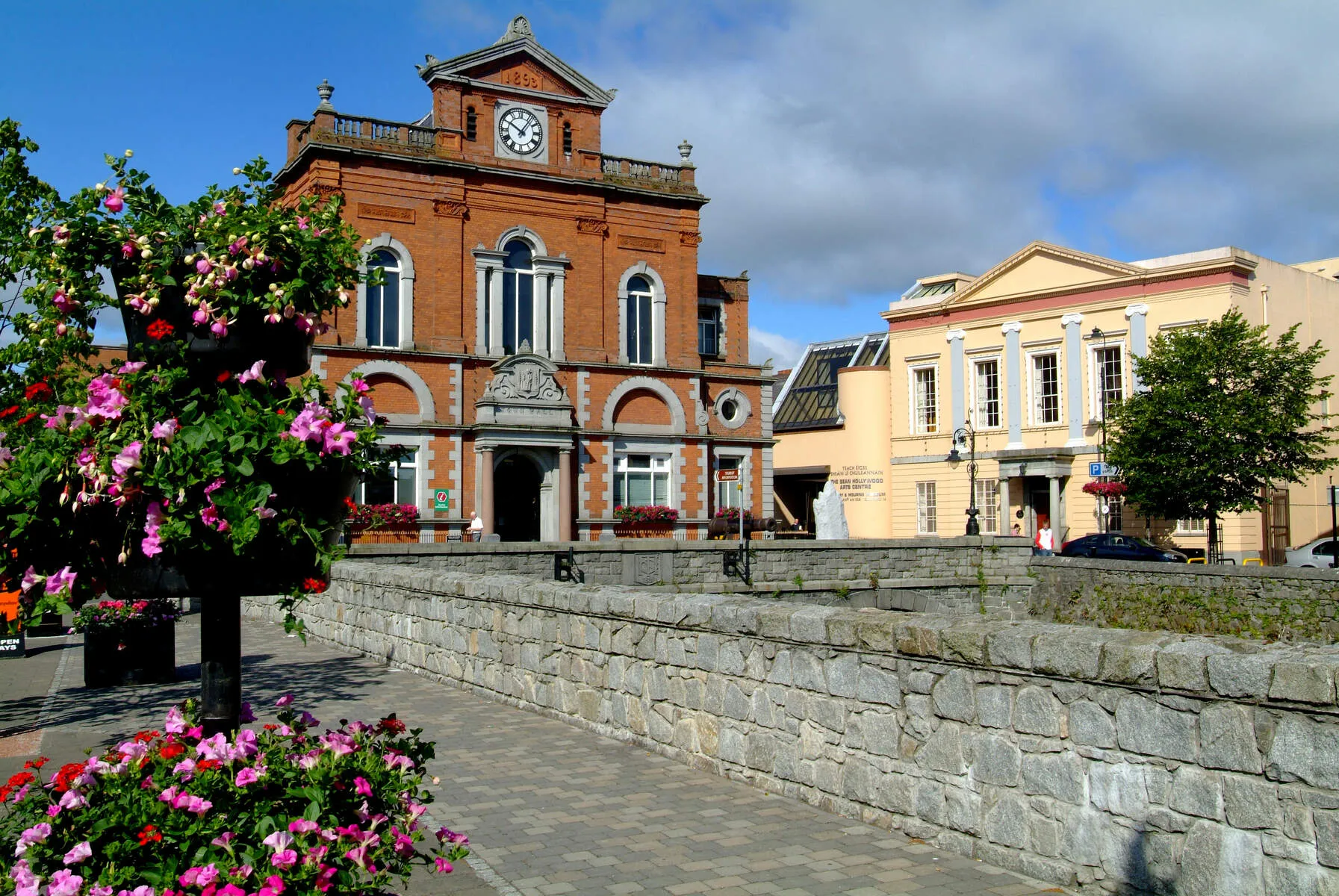Perched where the jagged peaks of the Mourne Mountains plunge toward Carlingford Lough, Newry feels like a crossroads between land and sea - and nations too. This vibrant town straddles County Down and County Armagh near Ireland's southern border, its streets echoing with 900 years of history since Normans built Bagenal's Castle here in the 16th century. Gaze up from the banks of the River Clanrye and you'll see Slieve Donard's snow-crowned summit piercing the sky - a northern anchor of Ireland's Ancient East, where myths like Finn MacCool's giant's steps still linger in the Ring of Gullion's ancient hills.
For explorers, Newry is a launchpad to wild beauty: hike up Slieve Donard for panoramic views over Belfast Lough and the Cooley Peninsula, trace the Mourne Wall's dramatic path through granite wilderness, or paddle Carlingford's turquoise waters. Back in town, Gothic Revival spires of Newry Cathedral glint with Italian marble altars, while Bagenal's Castle guards secrets in its vaulted halls. By night, the buzz shifts to live music sessions in cozy pubs - a reminder that this quiet gateway holds more than meets the eye, blending coastal calm with stories that shaped Ireland itself.
Jump to section:
Things to See and Do
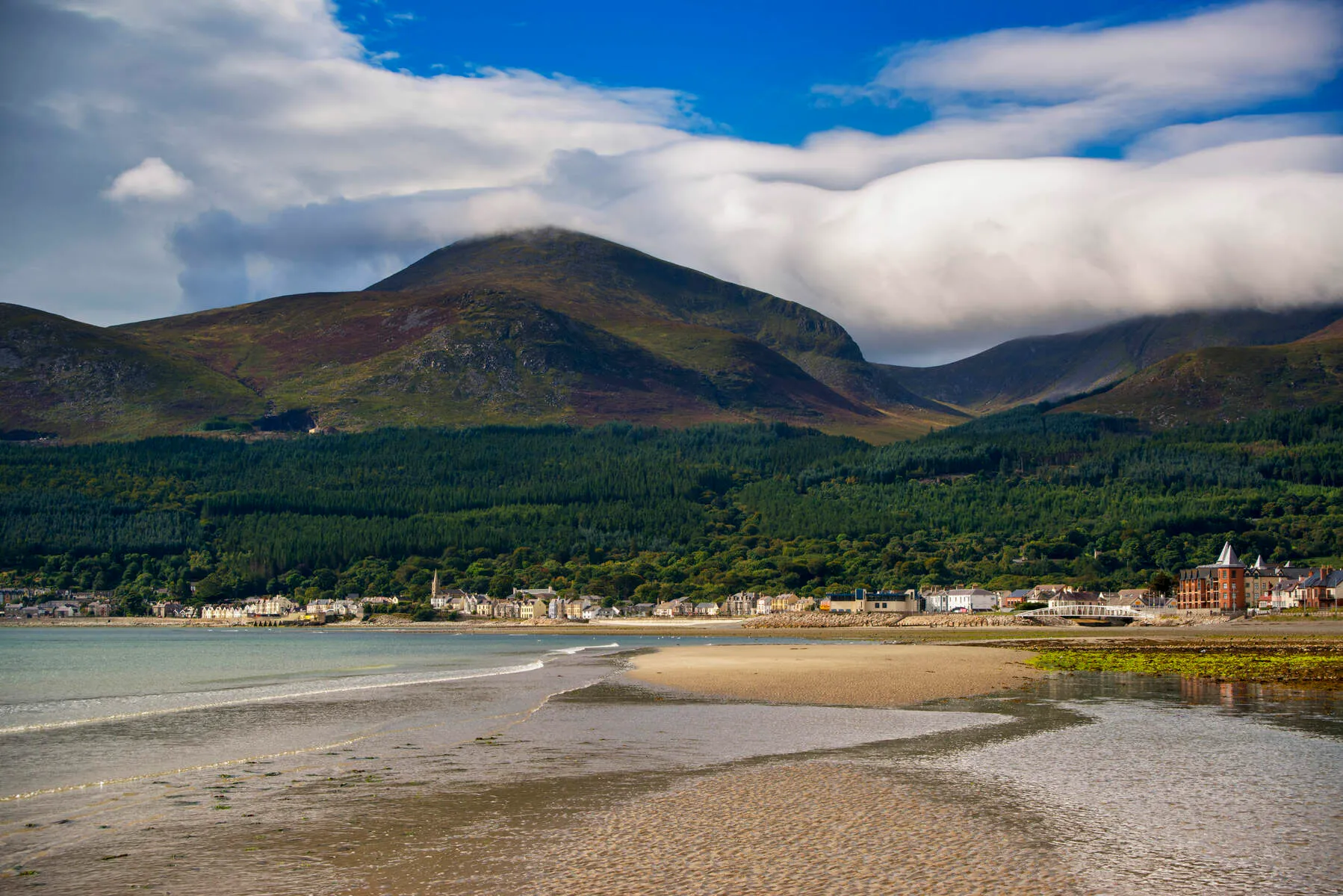
Slieve Donard Mountain
Northern Ireland's tallest peak (850m) in the Mourne Mountains, offering panoramic coastal views. Popular for hiking and mountain climbing.
Bagenal's Castle & Newry and Mourne Museum
16th-century fortified house built over an 12th-century Cistercian abbey site. Houses a museum showcasing Newry's history, medieval artifacts, and a restored banquet hall.
Newry Cathedral
A Grade A-listed Gothic Revival cathedral built in the 1820s from local granite. Features Italian marble altars, German stained glass, and houses a relic of St Teresa of Calcutta.
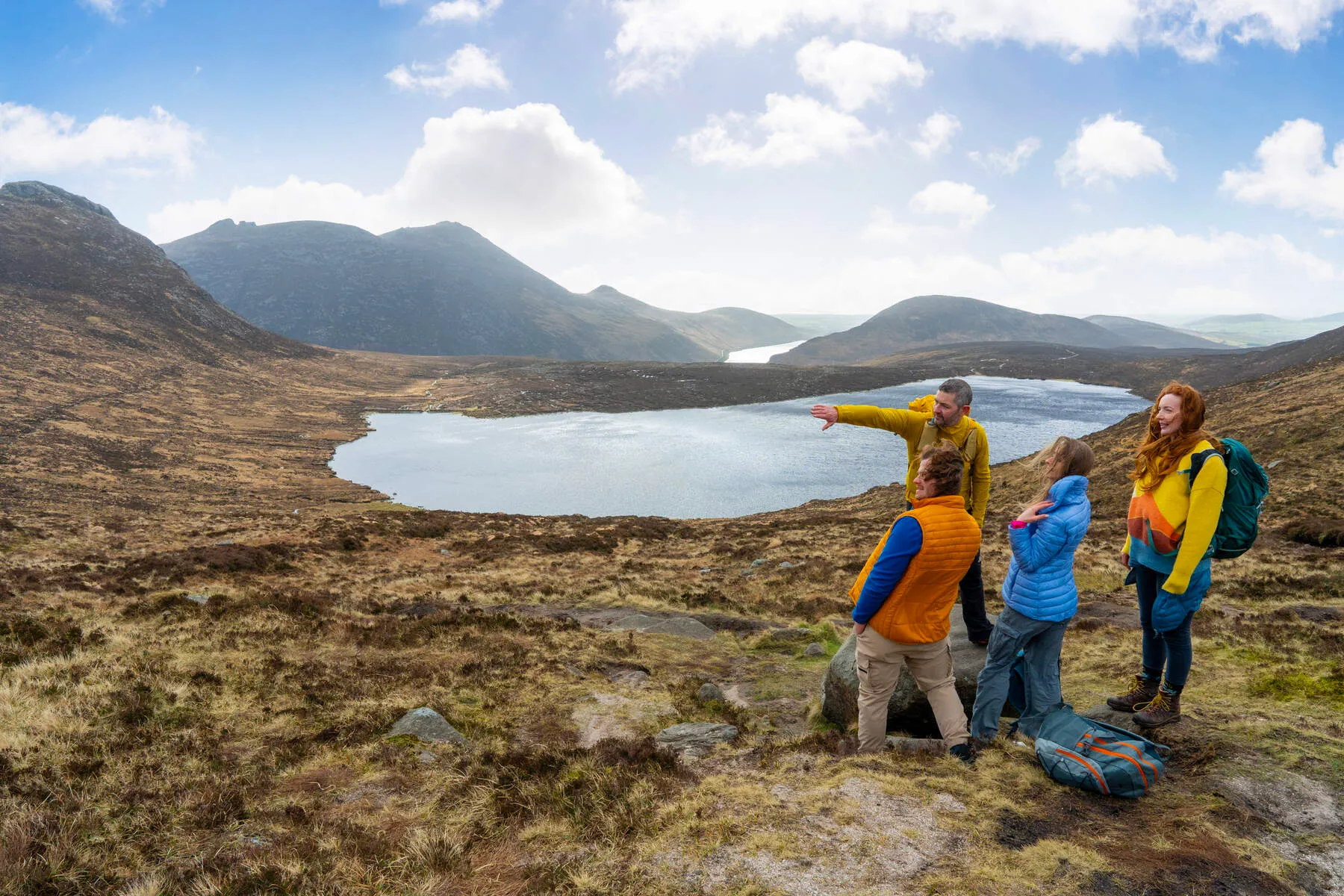
Silent Valley Reservoir & Mourne Wall Trail
Surrounded by the Mourne Mountains, this reservoir features a 35km dry-stone Mourne Wall built over 18 years. Trails offer mountain views and historical insights.
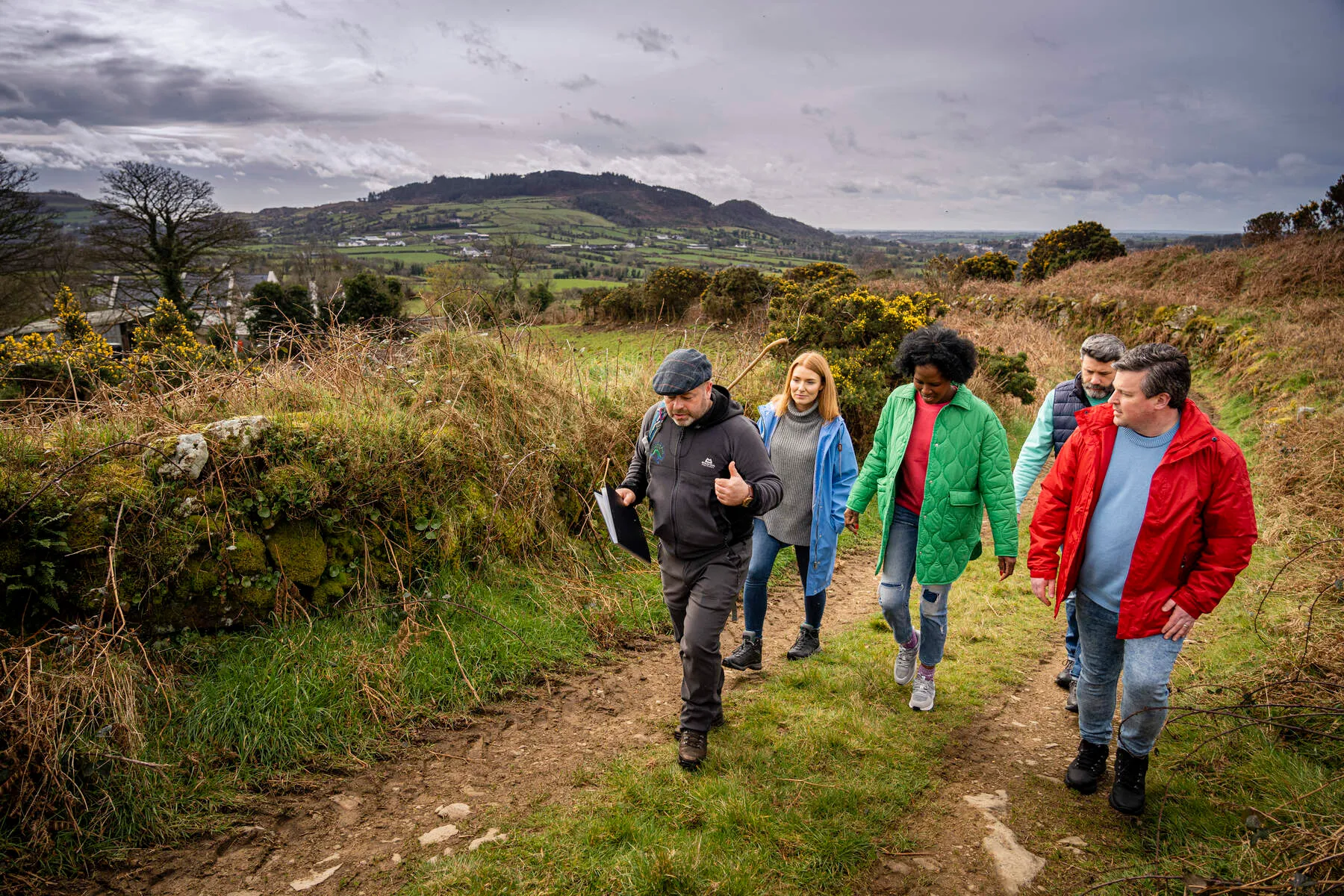
Slieve Gullion Mountain & Forest Park
Northern Ireland's 'Mountain of Mystery' (573m) with two prehistoric cairns. The forest park offers trails, a visitor centre, and the Giant's Lair children's adventure trail.
Seascope Lobster Hatchery (Kilkeel)
A marine laboratory offering tours on lobster conservation, interactive exhibits, and arts activities for all ages.
Moyry Castle
A 17th-century campaign fort from the Nine Years' War. Features a stone tower atop an earthen bawn with strategic views of the Moyry Pass.
Narrow Water Castle & Keep
A 16th-century limestone fortress guarding Newry River estuary, showcasing military architecture from Plantation era.
Annalong Cornmill
Restored 19th-century watermill operational until the 1960s. Visitors can explore rural Mourne heritage through seasonal guided tours of its milling operations.
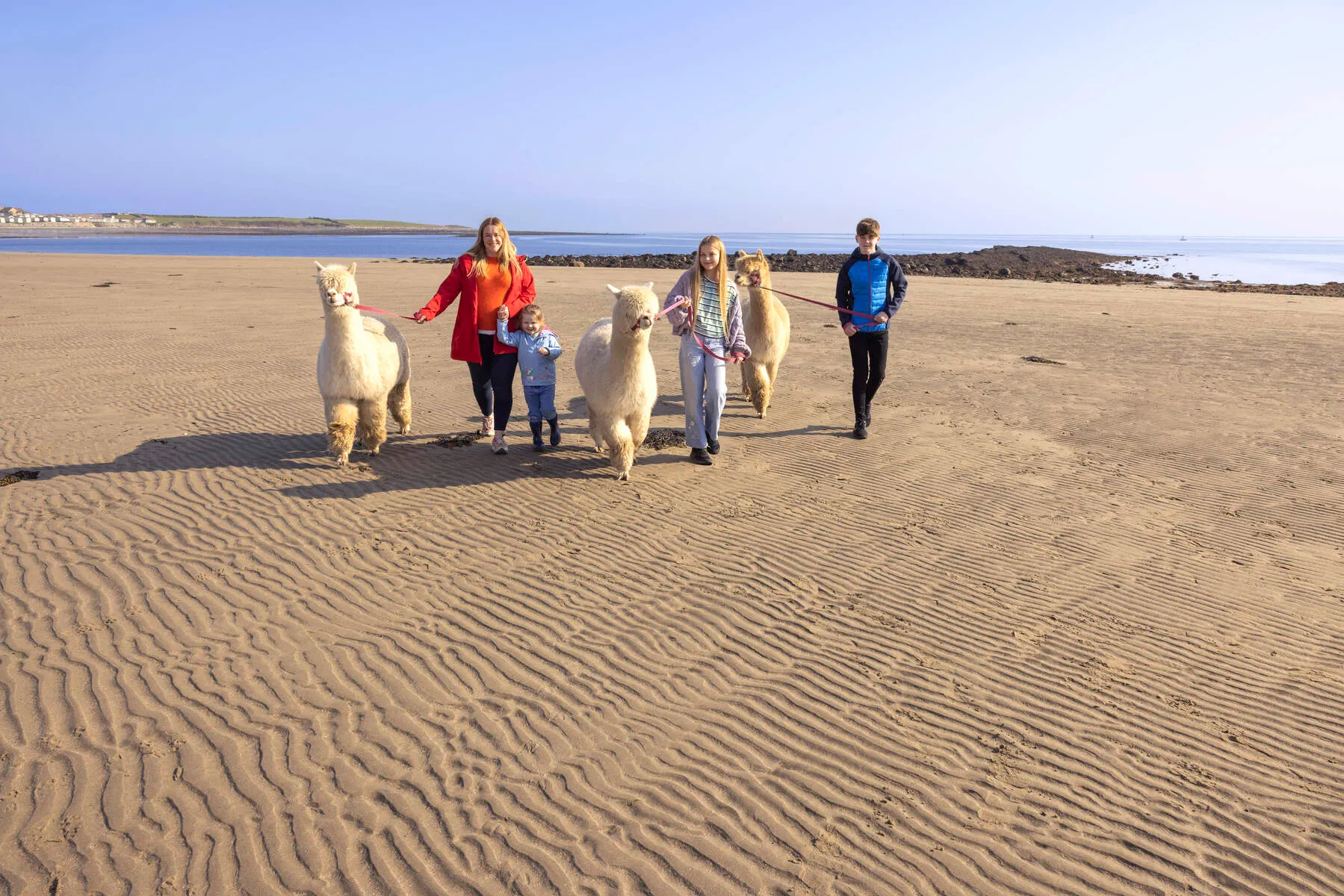
Cranfield Beach
A Blue Flag beach on Carlingford Lough with lifeguards (June-Sept). Offers scenic coastal walks and cliff paths along the shore. There is also a unique 'Alapaca Family' experience run by cranfieldalpacas.com.
Newry Canal Way
32km walking/cycling route along historic summit-level canal. Passes Terryhoogan Aqueduct, 13 locks, and scenic Lough Shark areas.
Killeavy Old Churches
Two medieval churches (10th–15th century) at Slieve Gullion's base. Part of a 6th-century monastic site founded by Saint Moninna.
Derrymore House
Thatched 18th-century summer lodge with free grounds access. Houses the Treaty Room where parts of the 1921 Anglo-Irish Treaty were negotiated.
St Patrick's Church
Ireland's first Protestant church built in 1578 (rebuilt 1866). Features four spires on its clock tower overlooking Newry city.
Kilnasaggart Standing Stone
An 8th-century inscribed stone with 13 Celtic crosses dedicated to Saint Peter, marking an early Christian burial ground near Newry.
Getting There
Air
The nearest airports are Belfast International Airport (BFS) and George Best Belfast City Airport (BHD), which offer connections to various UK and European cities. You can also fly into Dublin Airport (DUB) in the Republic of Ireland and take a bus or train to Newry.
Rail
-
The Enterprise Train runs hourly from Dublin Connolly via Drogheda and Dundalk, taking 70 minutes to reach Newry.
-
From Belfast, the train takes an hour via Portadown.
-
Commuter trains also run between Bangor, Belfast, and Portadown, extending to Newry during rush hour.
Bus
-
Goldline Express Bus 238 runs hourly from Belfast via Hillsborough and Banbridge, taking 75 minutes to reach Newry.
-
Expressway Bus X1 runs every couple of hours from Dublin Busáras and Airport (DUB) to Newry, taking 90 minutes, and continues to Banbridge, Sprucefield Shopping Centre near Lisburn, and Belfast.
-
Ulsterbus 63 runs every couple of hours from Portadown, taking an hour to reach Newry.
-
Bus 240 runs every couple of hours from Downpatrick via Newcastle, taking 70 minutes.
-
Translink operate daily services from Dublin Airport and Dublin City Centre (Busáras) to Belfast with stops in both Newry and Banbridge. Journey times are approx 1 hour 30 minutes (Newry) or about 1 hour and 50 minutes (Banbridge).
Car
Newry is located on the M1/A1 motorway, which connects Belfast to Dublin. There is a toll at Drogheda to the south. From Dublin, take the M1 motorway northbound and cross the border into Northern Ireland. From Belfast, take the A1 southbound towards Newry. Travelling by car from Dublin to County Down is a simple matter of getting on the M1 and travelling north, then transferring to the 'A' Road system in Northern Ireland, e.g. A1 to Newry.
Ferry
The Carlingford Ferry operates between Greencastle in County Down and Greenore in the Republic of Ireland, east of Dundalk. A car with all passengers costs £12, while a foot passenger, cyclist, or motorbike costs £2.25. The ferry sails hourly from April to September and on weekends from October to March.
Approximate travel times:
-
From Belfast: 1 hour by train, 1 hour by car
-
From Dublin: 1 hour 30 minutes by bus (Newry), 1 hour 50 minutes by bus (Banbridge), 2 hours by car
Events & Festivals 2025
There are currently no events listed. If you would like to add an event, please contact us.
History
Newry's history dates back to the Bronze Age, with evidence of human habitation and intricate jewellery-making in the area. The city's name is derived from the Irish word "An Iúraigh," meaning "the grove of yew trees." In 1157, a Cistercian abbey was founded by Muirchertach Mac Lochlainn, king of Tír Eoghain and High King of Ireland, marking the beginning of Newry's development as a settlement.
The abbey thrived for four centuries before being dissolved by the English in 1548. Nicholas Bagenal, Marshal of the English army in Ireland, was granted ownership of the former abbey lands and built Bagenal's Castle on the site. The castle played a significant role in Newry's history, including its involvement in the Irish Rebellion of 1641.
During this rebellion, Newry was captured by Irish Catholic rebels, only to be seized later by a Scottish Covenanter army. The city suffered further violence and destruction, particularly during the Williamite War, when it was attacked by Jacobite forces. The Raid on Newry in 1689 saw Williamite forces repel an attack by the Jacobites, while the Duke of Berwick set fire to parts of the town.
The 18th century brought significant economic growth to Newry with the opening of the Newry Canal in 1742, which connected the city to the Irish Sea and made it a major trading center. The canal, the first summit-level canal in Ireland, facilitated the transportation of goods and helped establish Newry as a key commercial hub.
Newry's strategic location between Belfast and Dublin made it an attractive target during times of conflict. The city suffered during the Irish War of Independence and the Troubles, with several violent incidents occurring throughout the 20th century. However, in recent years, Newry has undergone significant redevelopment and revitalization efforts, transforming it into a thriving urban center.
Today, visitors can explore Newry's rich history by visiting landmarks such as Saint Patrick's Church, built in 1578, and the Cathedral of SS Patrick and Colman, completed in 1829. The city's historic buildings, including Bagenal's Castle and the Newry Town Hall, showcase its complex and fascinating past. The Craigmore Viaduct, a railway bridge with eighteen arches, is another notable feature of the city's landscape. With its unique blend of history, culture, and natural beauty, Newry continues to captivate visitors from around the world.
